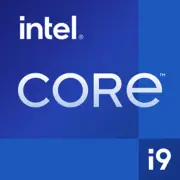Intel Core i9-7960X X-series

Intel Core i9-7960X X-series: Power for Professionals in 2025
Introduction
Even years after its release, the Intel Core i9-7960X remains in demand among enthusiasts and professionals. This 16-core monster architecture built on Skylake-X continues to prove its relevance in tasks that require multithreading. In 2025, it maintains its position in the secondary market, with new units still available priced between $1000 and $1200. Let's explore who should pay attention to it and why.
1. Key Specifications
Architecture and Manufacturing Process
The processor is built on the Skylake-X microarchitecture using a 14nm manufacturing process. Despite being outdated by 2025 standards, its 16 cores and 32 threads provide high parallel performance. The base clock speed is 2.8 GHz, with Turbo Boost up to 4.4 GHz.
Key Features:
- AVX-512 support for accelerating calculations in scientific and engineering tasks.
- 22 MB L3 cache.
- 44 PCIe 3.0 lanes (important for workstations with multiple GPUs or NVMe drives).
Performance:
- In Cinebench R23 benchmarks, the multithreaded score reaches approximately 25,000 points, comparable to modern mid-range 12-core CPUs.
- In single-threaded tasks, it lags behind newer 5nm processors (such as the AMD Ryzen 9 7900X), but this is not critical for rendering or virtualization.
2. Compatible Motherboards
Socket and Chipsets
The i9-7960X uses the LGA 2066 socket and is compatible only with the Intel X299 chipset. In 2025, finding new motherboards is challenging, but models like the ASUS ROG Rampage VI Extreme or MSI X299 SLI PLUS are still available for purchase ($300-500).
Selection Features:
- VRM Module: Due to the high TDP (165W), a motherboard with at least 8-phase power and MOSFET heatsinks is necessary. For example, the ASUS Prime X299-A.
- M.2 Slots: Check for heatsinks on NVMe drives to avoid throttling.
3. Supported Memory Types
The processor only works with DDR4:
- Frequencies: Up to 2666 MHz (no overclocking) or 3200+ MHz (with XMP profiles).
- Configurations: 4-channel mode — for maximum bandwidth, use 4 or 8 modules.
- Recommendations: Optimal capacity is 64 GB (4×16 GB) with CL16 timings.
Important: DDR5 is not supported — this is a major downside for upgrades in 2025.
4. Power Supply Recommendations
Considering the 165W TDP and potential overclocking:
- Wattage: A minimum of 750W is required (for a system with one graphics card), 850+W for multi-GPU setups.
- Certification: 80 Plus Gold or Platinum (Corsair RM850x, Seasonic PRIME TX-750).
- Cables: Fully modular PSUs will simplify assembly and improve ventilation.
Practical Example: Users with an overclocked i9-7960X at 4.6 GHz and an RTX 4080 report stability only with a PSU of 850W.
5. Pros and Cons
Pros:
- Multithreaded Performance: Relevant for rendering (Blender, V-Ray), video encoding, and virtualization.
- Configuration Flexibility: The 44 PCIe lanes allow multiple GPUs or NVMe RAID configurations.
- Overclocking Potential: With good cooling, clock speeds can be increased by 20–25%.
Cons:
- Power Consumption: Under overclocking, TDP can reach 250W.
- Outdated Platform: No PCIe 4.0/5.0 or DDR5 support.
- Price: New units are more expensive than modern alternatives (for example, AMD Ryzen 9 7950X).
6. Usage Scenarios
Work Tasks
- 3D Rendering: Render times in Cinema 4D are reduced by 30% compared to 12-core CPUs.
- Virtualization: Running 5–7 virtual machines without loss of responsiveness.
Gaming
- Streaming: NVIDIA Broadcast + OBS utilize all threads, ensuring smooth 4K streaming.
- 4K Gaming: Performance is limited by the GPU, but in CPU-dependent games (like Microsoft Flight Simulator), there may be dips due to lower clock speeds.
Multimedia
Encoding 8K video in HandBrake takes 15% less time than with the Ryzen 9 5900X.
7. Comparison with Competitors
AMD Ryzen Threadripper 1950X (16 cores, 32 threads)
- Pros of AMD: Lower price (around $800 for new), PCIe 3.0 x64 support.
- Cons: Lags in IPC (Instructions Per Cycle) by 10–15%.
AMD Ryzen 9 7950X (16 cores, 32 threads, Zen 4)
- Pros: 5nm manufacturing process, DDR5, PCIe 5.0.
- Cons: Higher cost ($1200–1400), requires a platform change.
Conclusion: The i9-7960X is advantageous only if you already have an X299 motherboard and want to save on upgrades.
8. Practical Assembly Tips
- Cooling:
- Liquid cooling with a 360mm radiator (e.g., NZXT Kraken X73).
- Air cooling: Noctua NH-D15 (check case height!).
- Case: At least 6 fan slots (Lian Li PC-O11 Dynamic).
- Memory: For 4-channel mode, purchase sets of 4 or 8 modules.
Tip: Update the motherboard BIOS to the latest version for improved stability.
9. Conclusion: Who Should Consider the i9-7960X in 2025?
This processor is worth considering for:
1. Professionals on a budget who need multithreading without transitioning to DDR5.
2. Enthusiasts who already have an X299 platform and wish to enhance their system without replacing the motherboard.
3. Legacy software specialists requiring stability and a proven architecture.
Alternative: If building a new PC, it's better to choose modern options like the AMD Ryzen 9 7950X or Intel Core i9-14900K — they offer better price, performance, and energy efficiency.
Conclusion
The Intel Core i9-7960X is a legend among workstations, but in 2025, it should only be bought for specific scenarios. It remains a powerful tool for those who value multitasking and are willing to accept its downsides for the sake of performance.
Basic
CPU Specifications
Memory Specifications
Miscellaneous
Benchmarks
Compared to Other CPU
Share in social media
Or Link To Us
<a href="https://cputronic.com/en/cpu/intel-core-i9-7960x-x-series" target="_blank">Intel Core i9-7960X X-series</a>